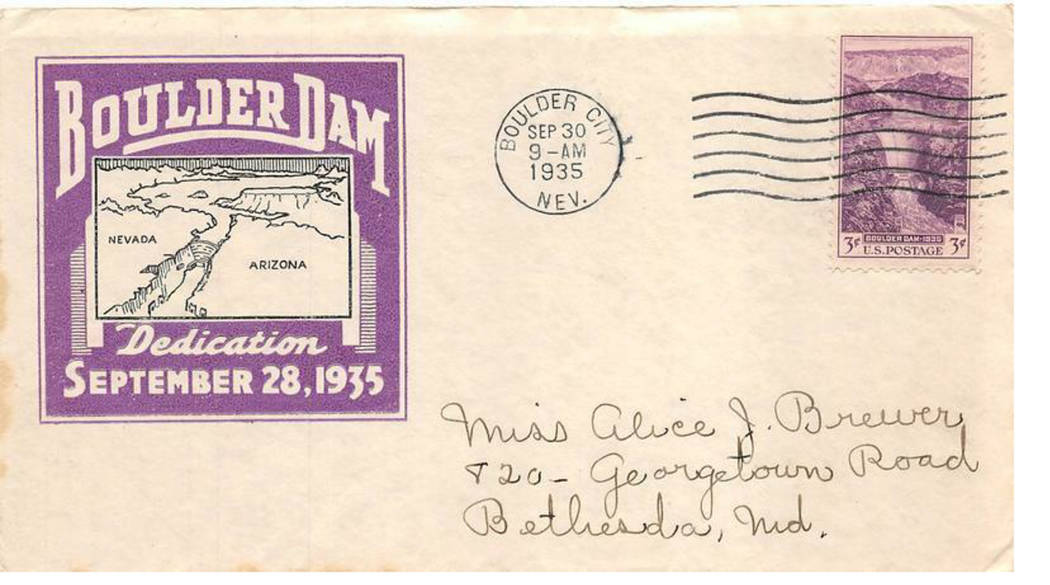
I’ve been collecting postage stamps since I was 14 and still enjoy the hobby greatly. Back in the ’80s I joined a new stamp club that was to be for “Worldwiders,” becoming member No. 25 and then vice president of public relations.
Recently, as I was cleaning out boxes, I located the entire publication history of our club newsletter, “The Circuit,” from 1984. The executive director of the International Society of Worldwide Stamp Collectors said it was the only known full set, so I sat down to organize and send it to them.
I couldn’t resist rereading some of the articles, especially from 1993-94, the years I served as president. (I limited it to one term as my job required a lot of travel and it was hard to run a growing club from a hotel room in Liechtenstein.)
One article, titled “That Dam Stamp,” was about the 3 cent stamp issued Sept. 30, 1935, commemorating Boulder Dam. It was written by Ken Jenkins, then-president of the club. Our town was, of course, to be the post office for the first release, a big deal back in those days when stamp collecting was the biggest hobby in the world.
Because of our local connection I decided to share portions of it with you. You may not be familiar with some of the history from the perspective of the stamp release.
Most of you know the lead-up to the story. When the dam project was launched, Herbert Hoover was president and it was named Hoover Dam. It was renamed Boulder Dam shortly after Franklin D. Roosevelt took office. In 1935, the Las Vegas Chamber of Commerce began pushing the idea of a commemorative postage stamp. In April, Interior Secretary Harold Ickes met with Roosevelt and suggested such a stamp, at the request of Nevada Sen. Key Pittman. Roosevelt, being a big stamp collector, liked the idea very much and wanted to design the stamp himself.
Ickes arranged for a photo to be taken from the air half a mile downstream. Ten days after the last concrete had been poured, Roosevelt told Postmaster General James Farley that he wanted a dam stamp to be released in sync with his planned visit to Boulder City on Sept. 28, 1935. After considering five proposed designs, the decision was made in favor of the eventual design, with Boulder Dam prominently bannered across the base of the dam. This was finalized Sept. 13, only 15 days away from the planned visit.
The choice was immediately controversial with former President Hoover and his Republican followers because they felt that the stamp, so named, would fix the Boulder Dam name in the public mind forever. They were pretty much right.
Schooled in Iowa, I still thought the official name was Boulder Dam when I moved here 16 years ago and only then finally understood the proper name.
This timing was preposterous. Designs are normally set six months ahead of the first day of issue. There were then two dozen private companies selling first-day covers that had to take the design and work it into cachets on mailing envelopes that would be printed and trucked to Boulder City for the stamps to be affixed and cancelled. That is, if the stamps were there to affix.
The post office department usually took three weeks to complete an engraving. This time it had 15 days to do the engraving, print half a million stamps and ship them to Boulder City to get them affixed in our tiny little post office.
In Washington, D.C., two engravers worked 12-hour shifts to complete the job in 10 days. World events then lent a hand when Sen. Huey Long was assassinated and Italy invaded Ethiopia, causing the president to delay his trip two days, so the official release was moved to the 30th. That’s why most preprinted first-day covers stated the 28th.
This article doesn’t say how they accomplished the Herculean tasks locally. The post office allowed extra days for the “first day” cancels to be affixed, as late as Oct. 9 in our case. But, does anyone know how we managed to affix and cancel stamps to over 166,000 covers? Dennis McBride maybe?
Dave Nelson retired to Boulder City in 2003 after a career with the FICO score company. He is vice president for the local Sons of Norway.